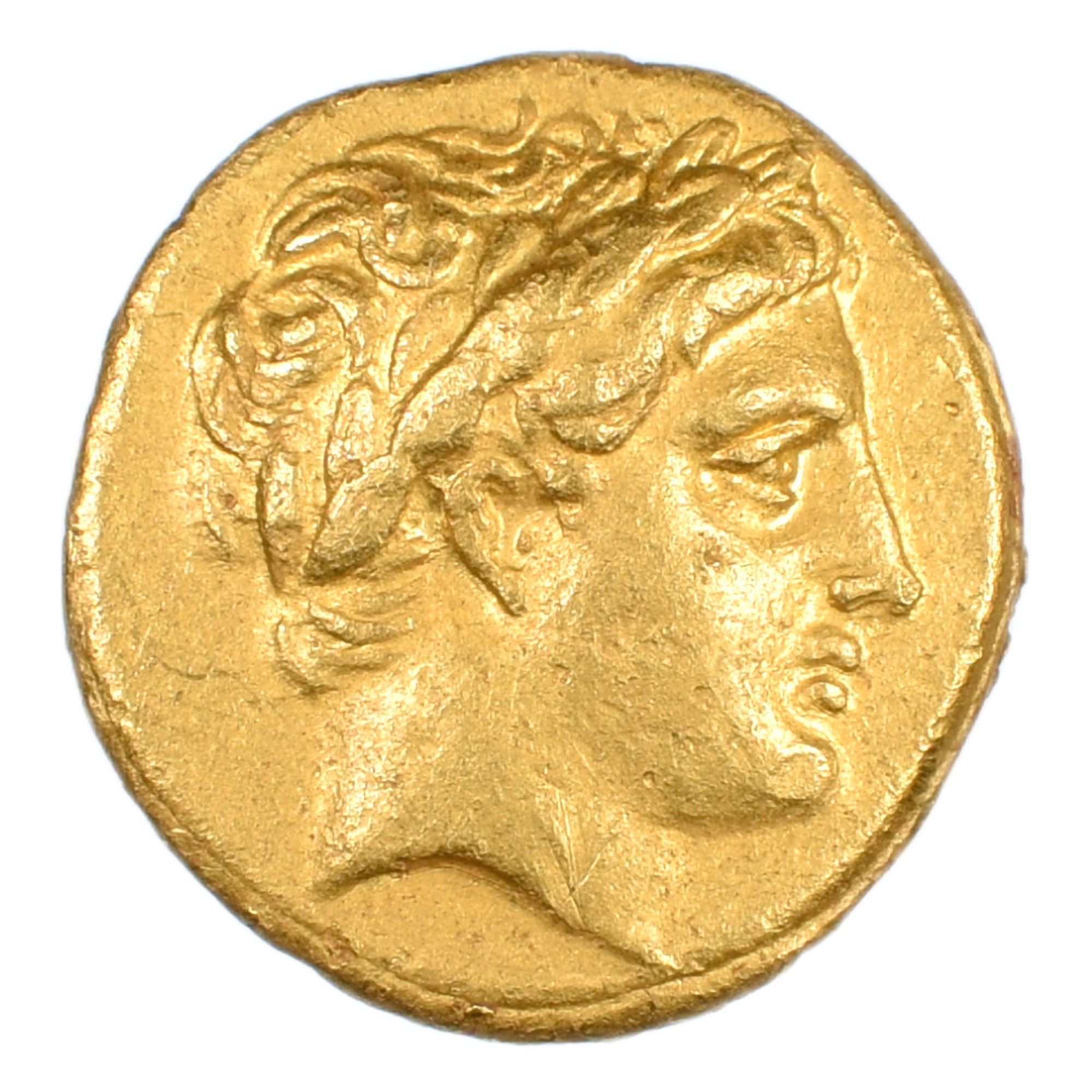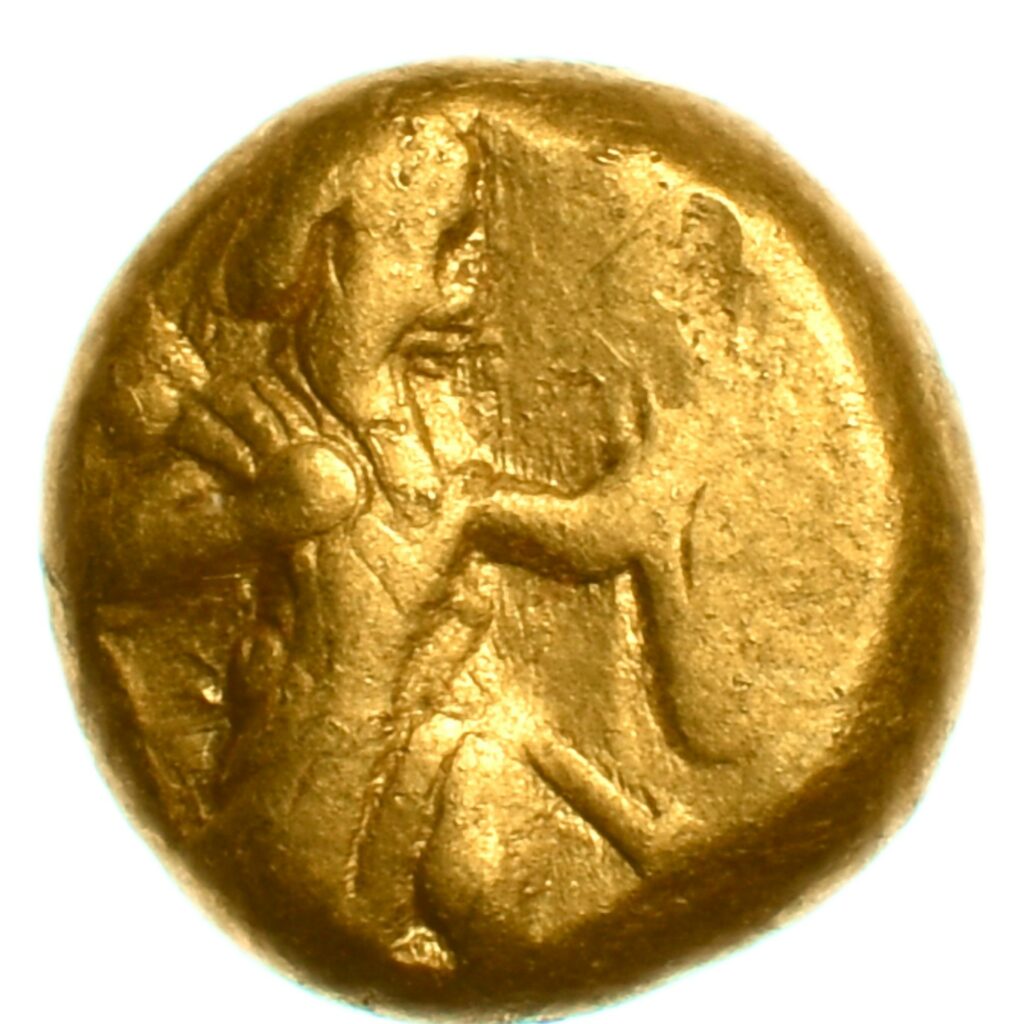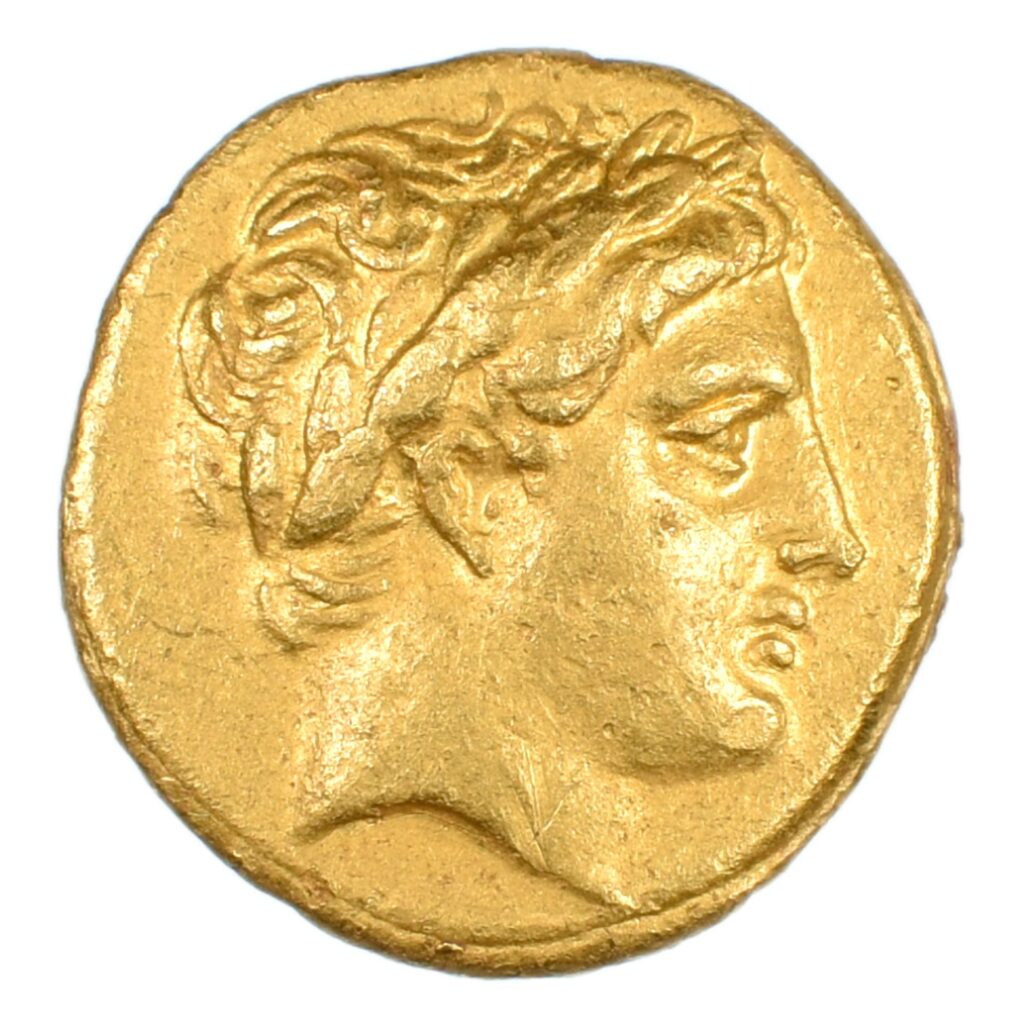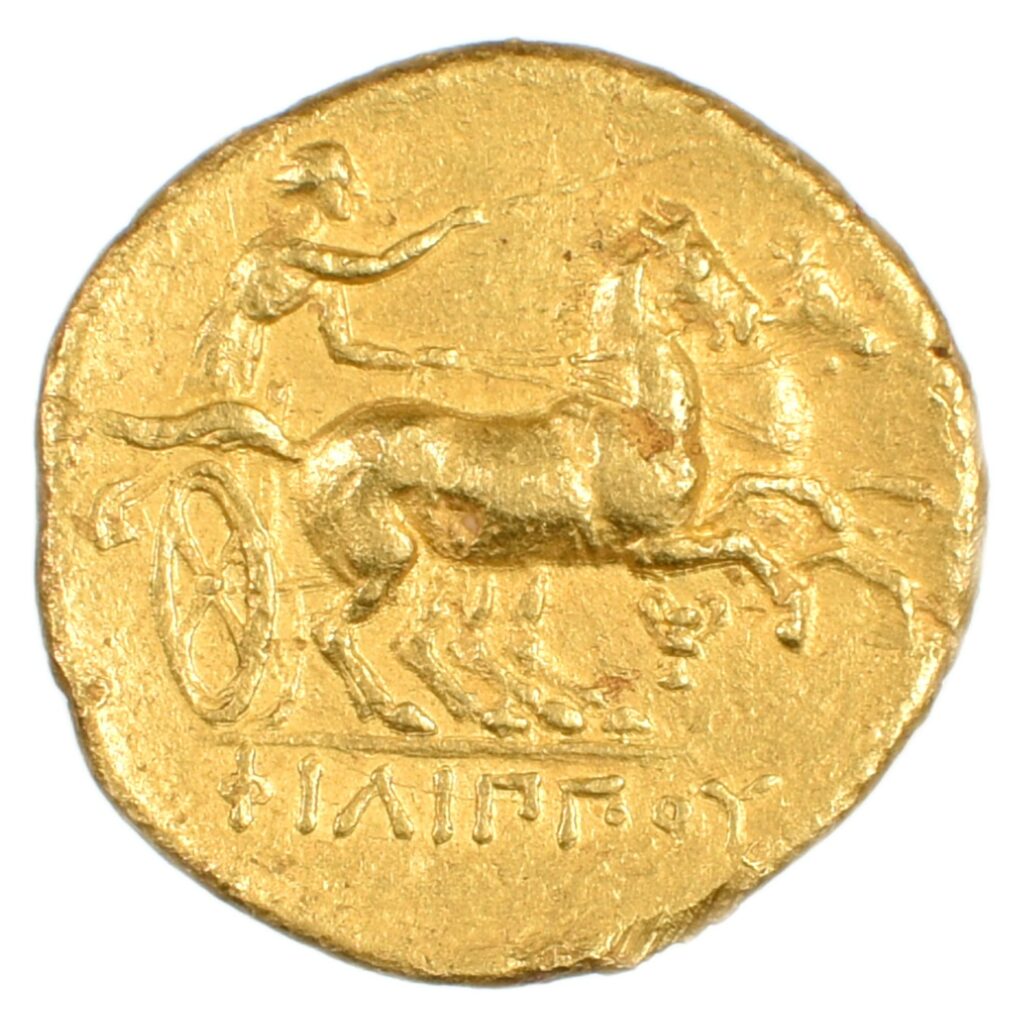First gold staters known mark the birth of money. They were issued byAlyattes and Croesus in Lydia (present-day Türkiye). Darius took up the same stallion for its darics within the Persian Empire but it was the Greek cities which, due to their establishment throughout the Mediterranean, made it a stallion.
Philip II of Macedon newly arrived in power consolidates his hold on the Greek cities thanks to the control of mines of pangea. Each city that came under his rule was forbidden the right to mint coins. Philip II initially issued numerous silver coins from 357-356 BC.
The gold staters in the name of Philip II were struck (346 BC) with the aim of replacing the Persian daric. It fulfilled its role with great success and Philips are even struck after the death of the sovereign (336 BC) until 315-310 BC.
His son, Alexander the Great, conquers much of Asia and the gold spoils that go with it. He thereby develops the gold stater throughout the new Kingdom of Macedonia.
Some figures on Roman spoils after the Macedonian wars to give an idea of the volume of minting :
- 240000 gold staters at the triumph of Scipio the Asiatic in Rome.
- 293000gold staters in 168 BC at the triumph of Paul-Émile after the victory of Pydna.
More surprisingly, the gold staters of Philip II also served as a model for the first Gallic coins. Indeed, during the 3rd century BC, Celtic warriors served as mercenaries for the Greeks during various conflicts. Paid in Macedonian staters, they were inspired by the original model, which gradually became deformed to only take on the features, thus giving rise to the more surreal Gallic coinage.





